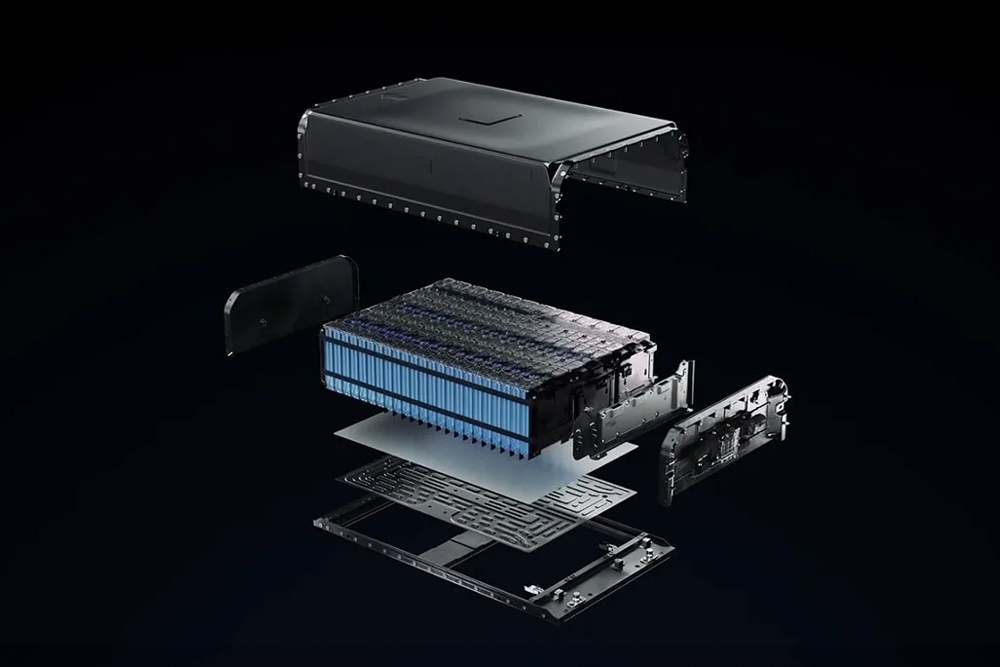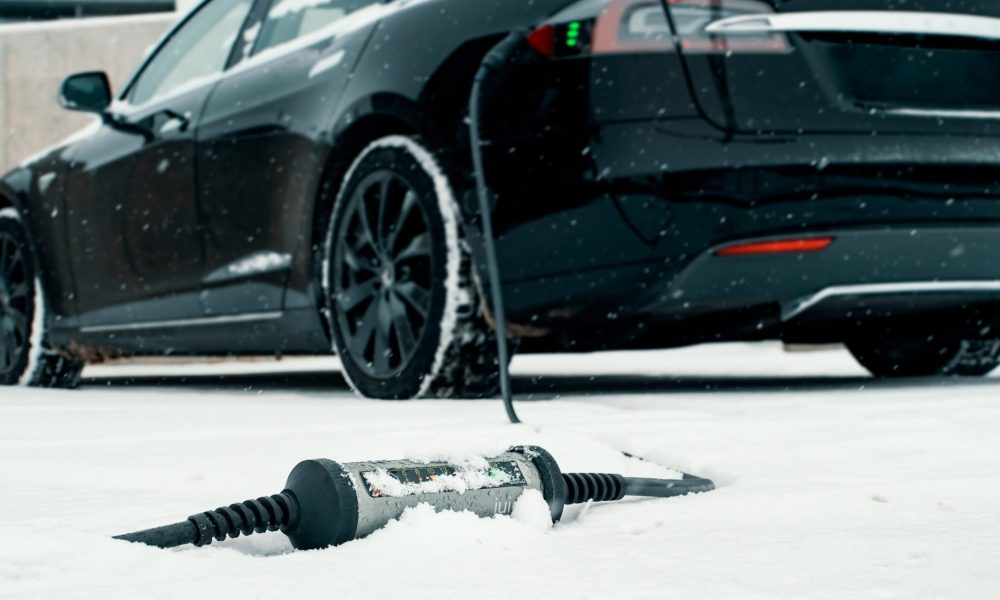EV Adoption Rate Cooling Off
Electrification is a trend taking over the world. This is true for EVs, as well as for heating and industrial processes. However, not all is perfect yet, as classical lithium-ion batteries suffer a severe drop in performance in cold temperatures. So, while this is not really an issue in California or China, two hot spots of EV adoption, it can be a serious one in northern latitudes.
Despite these limitations, we see that EV adoption rates are high in countries like Norway (72% EV and 14% hybrids), indicating a strong readiness of the population to switch to EVs.
Source: Roland Berger
Still, the case of Norway’s neighbors might indicate that without massive subsidies similar to the Norwegian ones, the adoption might plateau below 50% in the region.
If battery systems improve performance in the cold, the region and other similar countries could become among the first to reach 100% of BEV (Battery Electric Vehicles).
Until now, the main hope of improving performance in low temperatures was based on sodium-ion batteries, especially with solid progress made by the Chinese company CATL (follow the link for the corresponding report). But a new concept might open the way for lithium-ion batteries that are specifically adapted to cold conditions.
It was investigated by Chinese researchers at the Donghua University (China), Fudan University, Qingdao University, and Inner Mongolia University. They recently published their result in Angewandte Chemie under the title “Negative Thermal Expansion Behavior Enabling Good Electrochemical-Energy-Storage Performance at Low Temperatures”.
Lithium-Ion Batteries’ Problems With Cold
Lithium-ion batteries are still the most powerful and energy-dense form of batteries available today at the scale required for EVs. This might change in the future with solid-state batteries. Or maybe improved lithium-ion batteries like honeycomb batteries will be as efficient as solid-state technologies.
But in both cases, the issue of cold weather performance persists. The reason is that cold weather, especially below-freezing temperatures, slows the diffusion of lithium ions within the electrode material. For now, this has been considered a fundamental limit of the technology, driven by the physics of how lithium-ion reacts at cold temperatures.
The only alternatives in EVs have been to use the battery energy to keep it warm (wasting power) or install large enough battery packs that the range loss is acceptable for the user. At least until now.
Negative Thermal Expansion (NTE) Electrodes
The key concept used by the researchers is to use a characteristic called negative thermal expansion for the electrode material, or NTE. These are materials that expand when they are cooling, going in the opposite direction of most materials, especially metals.
An example in everyday life is water, which expands when freezing, making ice less dense than liquid water.
The tests were conducted using lithium titanium phosphate LiTi2(PO4)3 or “LTP”.
LTP
This material is formed of a crystal structure forming a 3D lattice of TiO6 octahedra and PO4 tetrahedra. This creates an open, flexible structure that contains both “cavities” and “channels,” where lithium ions can lodge.

Source: Angewandte Chemie
When cooled, the crystalline structure stretches along one of its crystal axes. This increases the distances between oxygen atoms, widening the cavities in the lattice.
The larger space in cold crystals facilitates the storage and transport of the lithium ions.
Strong Cold Performance
The increasing size of the cavities does not fully negate the lower mobility of lithium ions, but it helps a lot. The researchers found that at −10 °C, lithium ions’ diffusion rate was still at 84% of the value obtained at 25 °C. They also tested how efficient & stable such a battery would be.
Electrochemical tests on carbon-coated LTP at −10 °C showed good electrochemical performance with high capacity and a high rate capability. The battery durability was also high, with no significant degradation of retention capacity over 1000 charge/discharge cycles (96.8 % capacity retention).
Future Applications
This new type of electrode will need to be investigated for its potential in custom-built cold-climate EVs.
This is likely to be a requirement for EVs that have to operate in regions with harsh winters, like Canada, Scandinavia, Russia, mountainous regions, etc. At least to become the standard, and not just a nice-to-have secondary car for rich enough drivers.
It is also possible that other negative thermal expansion electrode material exists and displays even better electrochemical properties. So most likely, more research is going to be needed to find the ideal cold-weather electrode material.
In the long run, such technology might also have important applications in space exploration, with vehicles and energy storage systems operating in orbit, the Moon, or Mars likely to require strong performance even in brutally cold environments.
Investing In Advanced Battery Technologies
Batteries are at the center of the trend of electrification, itself a major multi-trillion-dollar endeavor looking to remove fossil fuels from our power sources.
You can invest in battery-related companies through many brokers, and you can find here, on securities.io, our recommendations for the best brokers in the USA, Canada, Australia, the UK, as well as many other countries.
If you are not interested in picking specific battery companies, you can also look into battery ETFs like Amplify Lithium & Battery Technology ETF (BATT), Global X’s Lithium & Battery Tech ETF (LIT), or the WisdomTree Battery Solutions UCITS ETF, which will provide a more diversified exposure to capitalize on the growing battery industry.
CATL (300750.SZ)
As discussed, CATL is a technological leader with advanced honeycomb lithium-ion batteries and sodium-ion designs.
The company is the global leader in battery manufacturing, producing more than half of the global battery volume. It is present at every step of the battery manufacturing supply chain.
This is true for lithium-ion batteries, where the company has been a long-established leader for a long time. It is also strong in LFP (lithium-iron-phosphate) battery, with the recently announced improved design that can add 600km of range in just 10 minutes. In total the driving range could be above 1,000 km (600 miles), totally removing all “anxiety range” for future EV owners.
In parallel, CATL has also announced in the past impressive progress on many battery types :

Source: CATL
CATL has invested 3.25B in battery recycling capacities in China. It has notably achieved a remarkable recovery rate of 99.6% for nickel, cobalt, manganese, and 91% for lithium.
Thanks to its scale, focus, and R&D achievements, CATL is likely to be at the forefront of battery innovation, manufacturing, and recycling.
This makes it a key partner for EV manufacturers, including Tesla, NIO, Ford, Stellantis, etc, with Hyundai recently added to CATL’s growing roster of strategic alliances.
In addition, the lessons learned in one chemistry can be applicable in another. So the discovery discussed in this article could be the origin of surprising combinations, for example, we can imagine a few new ideas:
- Negative thermal expansion electrode built with a honeycomb structure.
- Applying negative thermal expansion to sodium-ion technology to make the ultimate cold-resistant battery.
- Using negative thermal expansion in CATL’s ultra-stable utility-scale batteries, capturing the market for the electric grid of cold countries.
The economies of scale of already producing half of the world’s batteries are also likely applicable to the whole company, regardless of the specific technology used in an individual product.
So the more progress is made on battery tech in general, the more likely CATL is to be able to integrate it with its existing designs, creating larger demand, which itself increases the economies of scale further, in a positive feedback loop.
Lastly, investors should be aware of the growing rift between the USA and China, with CATL a potentially collateral victim. It has been added to the US Department of Defense’s Chinese Military Company (CMC) list.
CATL said in a statement that it had never engaged in any military-related business or activities, and that its addition to the CMC list was “a mistake.”
The company noted that it doesn’t expect any substantially adverse impact on its business, and that it was engaging with the US Department of Defense to address the situation, including by legal action if necessary.
Fast Market
This determination doesn’t impose any immediate sanctions on CATL or other companies on the list, but could still impact the stock price and CATL’s future exports to Western markets.
(You can also read our longer report from September 2024, entirely dedicated to CATL, for a deeper dive into the company’s history and technology).
